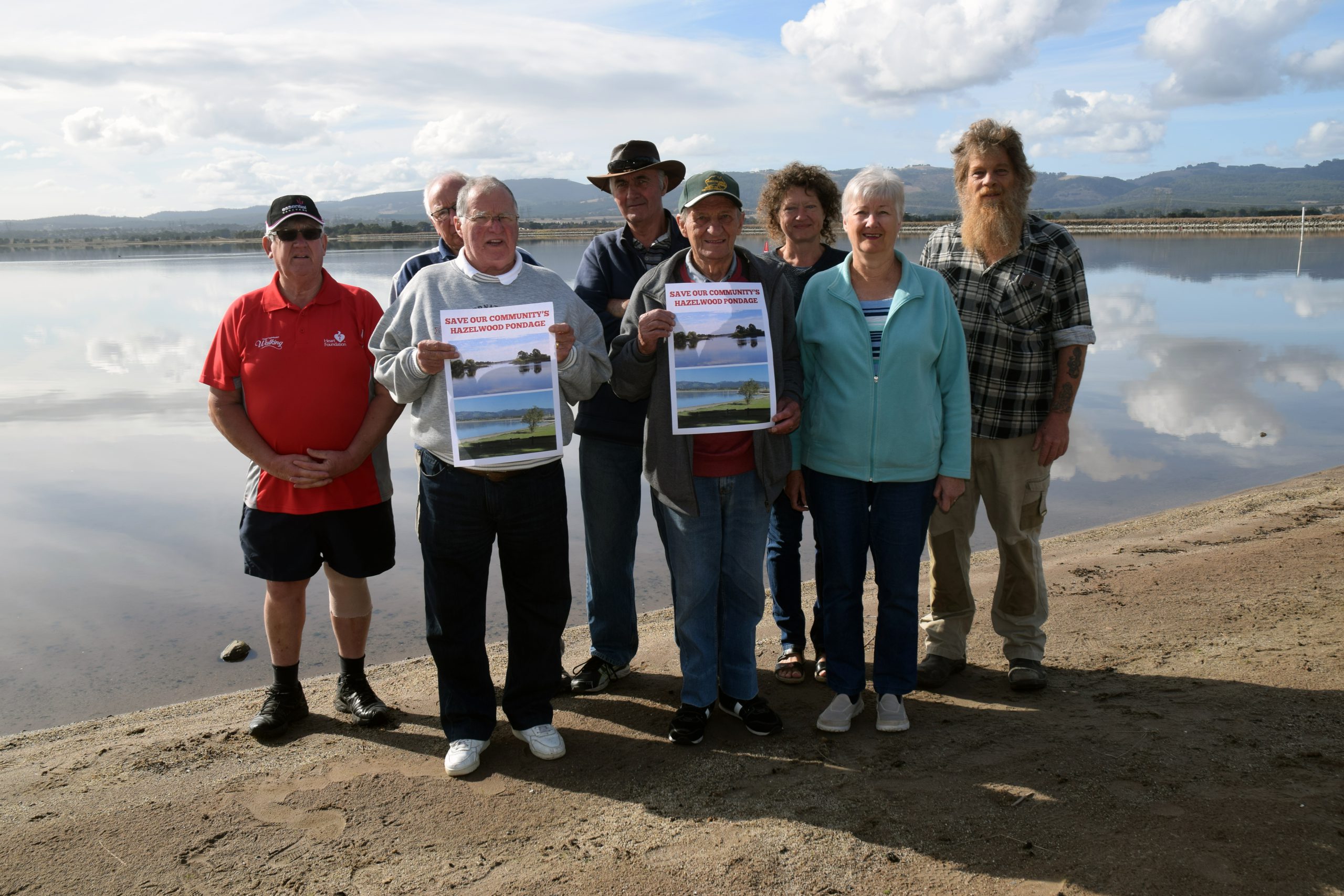
Dr RON CAMIER
Sadly, the chaos and sky-rocketing prices we now see in the electricity market was inevitable.
Too few of us saw it coming. Sure, it has been accelerated by the Ukraine invasion and the timing of some power station break-downs, but it’s a foretaste of what’s ahead.
Unfortunately the real problem is that the
fundamentals are not widely (and publically) understood.
Let’s start with Victorian brown coal, the world’s largest economically winnable deposit.
Although ‘clean’ in terms of low sulphur, nitrogen and inorganics (ash), it is extraordinarily high in moisture content (up to two thirds water) contained in its porous structure.
So if it is just dug up and burned, as is done in our Latrobe Valley power stations, extra coal must be burned (about 25 per cent more) to evaporate this moisture. In the past this didn’t matter because the coal was so cheap and easy to mine.
However now that carbon dioxide (its main product of combustion) is seen as a pollutant, that extra 25 per cent of emissions redefines it as ‘dirty’.
So what’s wrong with just closing down all these power stations?
What’s not well understood is that this high fuel moisture content in a conventional power station boiler requires extra volume (from water vapour), and more importantly very much extra internal surface area (for heat transfer) to compensate for lower flame temperature radiation.
The result is that the Latrobe Valley boilers are huge (about 20 stories high), double the size of an equivalent boiler burning any other fuel.
Therefore they cost about 60 per cent more to build with all the extra steel and concrete required.
So their capital cost is very high, while their operating cost is very low (due to our extremely cheap coal).
Consequently these power stations produce low cost electricity only if they are run at near 100 per cent capacity.
In the ‘old days’ the SECV achieved this by satisfying the morning and evening peak demands with minimal use of quick but expensive hydro and gas turbine generation, and then almost giving away night-time surplus electricity to big 24/7 industrial users and off-peak residential heat banks and hot water systems.
For some 80 years this high base-load generation model gave Victoria virtually the cheapest
electricity in the world, under-pinning economic prosperity with competitive manufacturing industries.
What’s changed?
Along came well-intentioned ‘renewable’ electricity generation with the promise of saving the climate.
Unfortunately these solar and wind power technologies provide erratic outputs, mostly in the middle of the day, rather than during the morning and evening peaks when most needed.
Due to public demand this was (and still is) promoted by a plethora of cross-subsidies ranging from home insulation, light bulbs, solar panels and tree-planting, to carbon taxes and mine
rehabilitation imposts.
The resulting over-investment in these technologies have produced wild fluctuations in electricity markets, often driving mid-day demand to near zero.
The resulting instability in wholesale electricity prices are a toxic environment for big, steady base load power generators.
This shrinking baseload means that coal-fired power stations are being displaced (leaving a gap) rather than replaced by renewables.
By no longer operating at near 100 per cent capacity, Latrobe Valley power stations are
damaged economically, affecting maintenance budgets as well as profits.
Worse still, is the physical damage from trying to cycle them up and down, with expansion and contraction stresses on their massive steel structures causing cracking and other failures.
Is the answer more investment in renewables, perhaps with additional battery storage?
Despite the benefit of reduced carbon dioxide output (and perhaps popular opinion), the answer unfortunately is no (as consumers may soon discover from plummeting solar feed-in tariffs).
This is because a fundamental problem with all renewables, again not well understood, is a basic law of nature known as the ‘second law of thermodynamics’. Essentially it means that collecting low intensity energy from the sun or wind (albeit apparently ‘free’) requires vast areas of collectors (solar panels or wind turbines) and concentration to produce useful (transmissible) high voltage electricity.
No matter how cheaply these components might be manufactured, the laws of nature cannot be changed, so this form of energy production will always be inherently expensive.
To this must be added the costs of expanded transmission networks and environmental impacts of massively increased rare earth mining and refining necessary to support such expansion.
Roughly quantifying this, by stripping away all subsidies and taxes, the basic cost of ‘deliverable’ electricity from renewables is around five times that of base load electricity (despite some claims that it is now cheaper).
We must ask is that a reasonable price to pay for whatever change this might make in atmospheric carbon dioxide levels?
Possibly a more comprehendible analogy to consider is a hypothesis that all Melbourne’s water reservoirs (high quality water) could be replaced by using sea water (low quality) from Port Phillip Bay.
Obviously the technology exists (eg. Desal plant at Wonthaggi) to make this conversion, but desalinated water costs about five times that of current reservoir supplies!
What then is the default solution now filling the gap between ‘cheaper’ (subsidised) but erratic renewables and declining coal-fired base load generation?
Primarily it’s gas turbine generation which is quick to turn on and off, being like jet engines.
However they are thermally inefficient (about 80 per cent of their energy is lost in flue gases), still produce some carbon dioxide, and consume a relatively scarce and increasingly expensive premium fuel.
It is interesting to reflect that when I was at university in the 1970s, conventional wisdom and government policy was based on Victorian energy resources being 94 per cent Gippsland brown coal with 6 per cent Bass Strait oil and gas.
So the policy was to conserve oil and gas for premium purposes like transport and home heating, and find clever ways to use brown coal for everything else.
Indeed the SECV regarded it as such a travesty to burn gas for electricity that during construction, Newport 1000MW gas-fired power station was halved in size.
Of course the 1990s privatisation of Victoria’s energy industries led to the abandonment of all such restraints!
At this point I must acknowledge that global warming must be addressed, and exponential growth in population, resource consumption, fossil fuel combustion, energy prices (and dare I say extravagant lifestyles) are unsustainable. Is it possible to find a balance, without ideological polarisation?
Firstly there is a place for renewables (with batteries) especially in more remote locations, but there is probably now too much ‘before the meter’ rooftop solar to achieve system stability.
But is it likely that any political party would now be brave enough to wind it back?
Pumped hydro (Snowy 2.0), enlarged BassLink and more transmission interconnections across time zones are probably an expensive way of ‘softening’ the problem.
Perhaps over the next 10~15 years many cheap, rooftop systems will be reaching the end of their lives and without ongoing subsidies will not be replaced (but their disposal with toxic heavy metals may become another ‘headache’).
None of this is an adequate solution, because the real problem is lack of base load generation.
A very long-term solution could be nuclear power, but would it be socially acceptable with its attendant safety, security and waste disposal concerns?
Will better technologies (eg. nuclear fusion) be available in future?
The SECV originally proposed French Island as a suitable location.
Again, would any political party be brave enough to promote this at present?
A medium/long term solution might be to utilise the vast brown coal resources in Victoria, which are sufficient to last hundreds of years if used sustainably at current rates.
At one stage the SECV had plans for up to 21 power stations to sequentially utilise these resources, in conjunction with coal conversion plants producing exportable liquid and solid carbon-based products.
Improved ‘high-efficiency, low-emission’ (HELE) power technologies have been developed and implemented in Germany (and now many Asian countries are building various types of HELE coal-fired power plants).
These include pressurised pre-drying and combustion as well as ‘supercritical’ (extremely high pressure) steam cycle features which make them more compact.
Despite requiring more exotic metal alloys in their construction, they are physically smaller than the Loy Yang-style (atmospheric pressure) dinosaurs we are familiar with.
Although this technology reduces carbon dioxide emissions per MW of electricity, complete removal would require additional ‘carbon capture and storage’ (CCS).
Although easier to achieve in a pre-pressurised system, CCS is still very expensive on a large scale mainly because of the electricity consumption required for gas compression.
Arguably the best technology for our very wet Victorian coal is called ‘integrated drying,
gasification and combined cycle’ (IDGCC),
developed locally by HRL Limited.
It burns coal gas in a gas turbine cycle as well as generating superheated steam for a conventional steam turbine cycle. (As well as having better technology, Victoria also has better coal than in Germany.)
The elegance of this technology is that the coal moisture, instead of being a disadvantage as in a conventional boiler, becomes a useful part of the working fluid (mass flow) driving the gas turbine within the plant.
The net result is about 30 per cent more
electricity (and therefore 30 per cent less carbon dioxide per MW) than a conventional (Loy Yang-style) generator.
After proving it in a 10MW pilot plant at Morwell, HRL proposed to build a 600MW ‘dual gas’ plant (with natural gas back-up) at their Energy Brix Morwell site, possibly to be followed by a larger power station at Hazelwood.
Unfortunately this proposal was rejected for environmental reasons (burning coal!), and the HRL company subsequently went bankrupt. Is it now too late to revive this sort of technology?
Finally who is to blame for the current electricity industry crisis? Is it politicians or any particular political party?
I don’t think so, because politics is usually well-intentioned in its pursuit of popularity, to as much as possible meet the desires of the general public. So is it the general public?
I don’t think so, because most people want what they perceive is best for their community and care about protecting the environment. Therefore perhaps responsibility lies with the ‘technocrats’, those who understand the technology, its
engineering and its economics (not just the ‘science’ of what is theoretically possible).
These are the advisors of corporate and government decision-makers, who have failed to effectively communicate a balanced assessment of the true facts.
They are people like myself. This therefore is an apology for my part in the electricity industry chaos in Victoria.
Dr Ron Camier is a long-time Latrobe Valley resident, and retired chemical engineer whose career included working at The University of Melbourne Brown Coal Research Laboratory, CSIRO Division of Mineral Engineering, SECV Herman Research Laboratory, Victorian Brown Coal Council Development Division, Brown Coal Liquefaction Victoria Pty Ltd, Coal Corporation of Victoria and HRL Limited.












